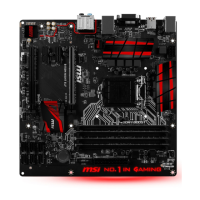
Do you have a question about the MSI B150M NIGHT ELF and is the answer not in the manual?
| Socket | LGA 1151 |
|---|---|
| Chipset | Intel B150 |
| Form Factor | Micro ATX |
| Memory Slots | 4 x DIMM |
| Maximum Memory | 64 GB |
| PCIe Slots | 1 x PCIe 3.0 x16, 2 x PCIe 3.0 x1 |
| SATA 6Gb/s | 6 |
| USB Ports | 6 x USB 3.1 Gen1, 6 x USB 2.0 |
| Audio | Realtek ALC892 |
| LAN | Realtek RTL8111H Gigabit LAN |
| RAID Support | RAID 0, 1, 5, 10 |
| Memory Speed | 2133 MHz |
| M.2 | 1 x M.2 slot |
| Video Outputs | 1 x HDMI, 1 x DVI-D, 1 x VGA |
Lists the items included in the motherboard box.
Instructions to prevent electrostatic discharge damage to components.
Important safety advice for handling and operating the motherboard.
Lists essential tools and components for system assembly.
Step-by-step guide for installing the CPU onto the motherboard.
Detailed instructions for installing DDR4 memory modules into the slots.
Guide for connecting front panel connectors like power, reset, and LEDs.
Instructions for physically mounting the motherboard inside the computer case.
Step-by-step guide for connecting SATA hard drives and SSDs.
Instructions for installing a PCIe graphics card into the expansion slot.
How to connect external devices like keyboards, mice, and monitors.
Guide for connecting ATX power supply connectors to the motherboard.
Steps to safely power on the computer after assembly.
Details on supported CPUs, chipset, memory, and expansion slots.
Specifications for USB, SATA, LAN ports, and audio.
Details on internal connectors, I/O controller, and BIOS features.
Details on hardware monitoring and BIOS features.
Overview of included software and performance-enhancing gaming features.
Highlights unique features and technologies offered by MSI.
Key technical aspects and features summarized.
Visual representation of motherboard components and their interconnections.
Diagram and explanation of rear I/O ports and LAN LED indicators.
Guide to connecting audio devices to rear audio jacks.
Guide to using the software for audio configuration and settings.
Visual guides for connecting headphones, speakers, and surround sound systems.
Labeled diagram identifying key motherboard components and connectors.
A table listing components, their types, and page references.
Details on the LGA 1151 CPU socket and important installation precautions.
Guide to DIMM slots, memory module installation order, and recommendations.
Details on PCIe slots, their configurations, and multi-GPU setup advice.
Information on SATA connectors and best practices for SATA cable usage.
Pinout and connection details for ATX power supply connectors (JPWR1, JPWR2).
Details on connecting front panel switches and LEDs.
Information on connecting front panel USB 3.1 Gen1 ports.
Guide for connecting front panel USB 2.0 ports.
Instructions for connecting front panel audio jacks.
Details for connecting an optional serial port bracket.
Information on the Trusted Platform Module connector.
Details on connecting the chassis intrusion switch and configuration.
How to reset BIOS settings using the Clear CMOS jumper.
Explanation of the onboard LEDs indicating system status.
Explanation of PWM and Voltage mode fan connectors.
Methods for controlling fan speed via BIOS and COMMAND CENTER.
Methods to access BIOS and understand function keys.
Procedures for resetting BIOS and updating the BIOS firmware.
Details on viewing system information, date, and time within BIOS.
Configuration options for PCI/PCIe and ACPI power management.
Settings for onboard devices like LAN, SATA, and HD Audio.
Settings for onboard graphics, shared memory, and USB controllers.
Settings for Super I/O chip parameters like serial ports.
Configuration for fan speed control and system power management.
Settings for Windows OS compatibility and fast boot options.
Settings for secure boot and system wake-up event configuration.
Configuration for system wake-up via USB, PS/2, and hotkeys.
Settings for CPU ratio, core limits, and overclocking modes.
Adjusting CPU, Ring, and DRAM frequencies and voltages.
Accessing CPU/Memory specs and configuring CPU features like Hyper-Threading.
Settings for virtualization, prefetchers, AES, and CPU power states.
Configuring CPU power limits, Turbo Boost, and clock speeds.
Using the M-Flash utility to update the BIOS from a USB drive.
Setting up administrator and user passwords for BIOS access.
Configuring password prompts and clearing saved passwords.
Settings for TPM and chassis intrusion detection.
Configuring boot device priority and boot mode selection.
Options for saving changes, restoring defaults, and exiting the BIOS utility.
Steps for installing Windows, drivers, and system utilities.
Overview of the COMMAND CENTER utility for system monitoring and tuning.
Using COMMAND CENTER for CPU fan speed, voltage, and DRAM/IGP settings.
Detailed settings in COMMAND CENTER for voltage, fan, DRAM, and sensors.
Using settings for recording, warnings, and mobile control.
Remote control features and system status gadget mode.
Using LIVE UPDATE 6 to scan and download drivers, BIOS, and utilities.
Step-by-step guide for updating system components using LIVE UPDATE 6.
Overview of GAMING APP for system control and gaming performance.
Configuring on-screen display and controlling motherboard LED effects.
Setting up custom hotkeys for system control within GAMING APP.
Customizing mouse DPI and creating macros using GAMING APP.
Using M-CLOUD to create a Wi-Fi AP and share files.
Connecting M-CLOUD to Google Drive or Dropbox for cloud storage.
Creating and managing user accounts and permissions in M-CLOUD.
How to transfer files between computers using M-CLOUD.
Creating and managing a virtual RAM disk for faster storage.
Using GAMING LAN MANAGER for network traffic shaping and optimization.
Performing network speed tests to optimize bandwidth.
Using Intel XTU for advanced overclocking, testing, and system monitoring.
Solutions for common issues like no power, no signal, or boot failures.
Troubleshooting steps for audio, network, and USB device problems.
Recovering lost BIOS passwords and resolving BIOS update issues.
Statements regarding compliance with FCC, CE, and WEEE regulations.
Guidelines for battery disposal and MSI's environmental policy.
Information on Waste Electrical and Electronic Equipment disposal per EU directive.
Declarations of RoHS compliance and hazardous substance content.
Table detailing hazardous substance content in product components.
Copyright information and resources for technical assistance.




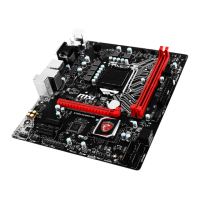
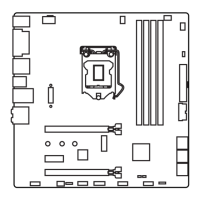

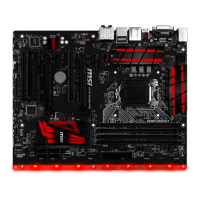

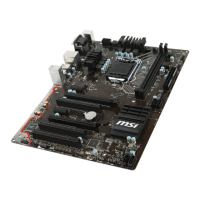
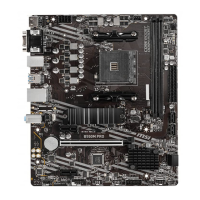
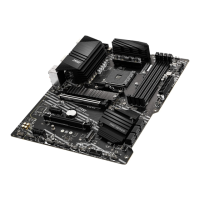
